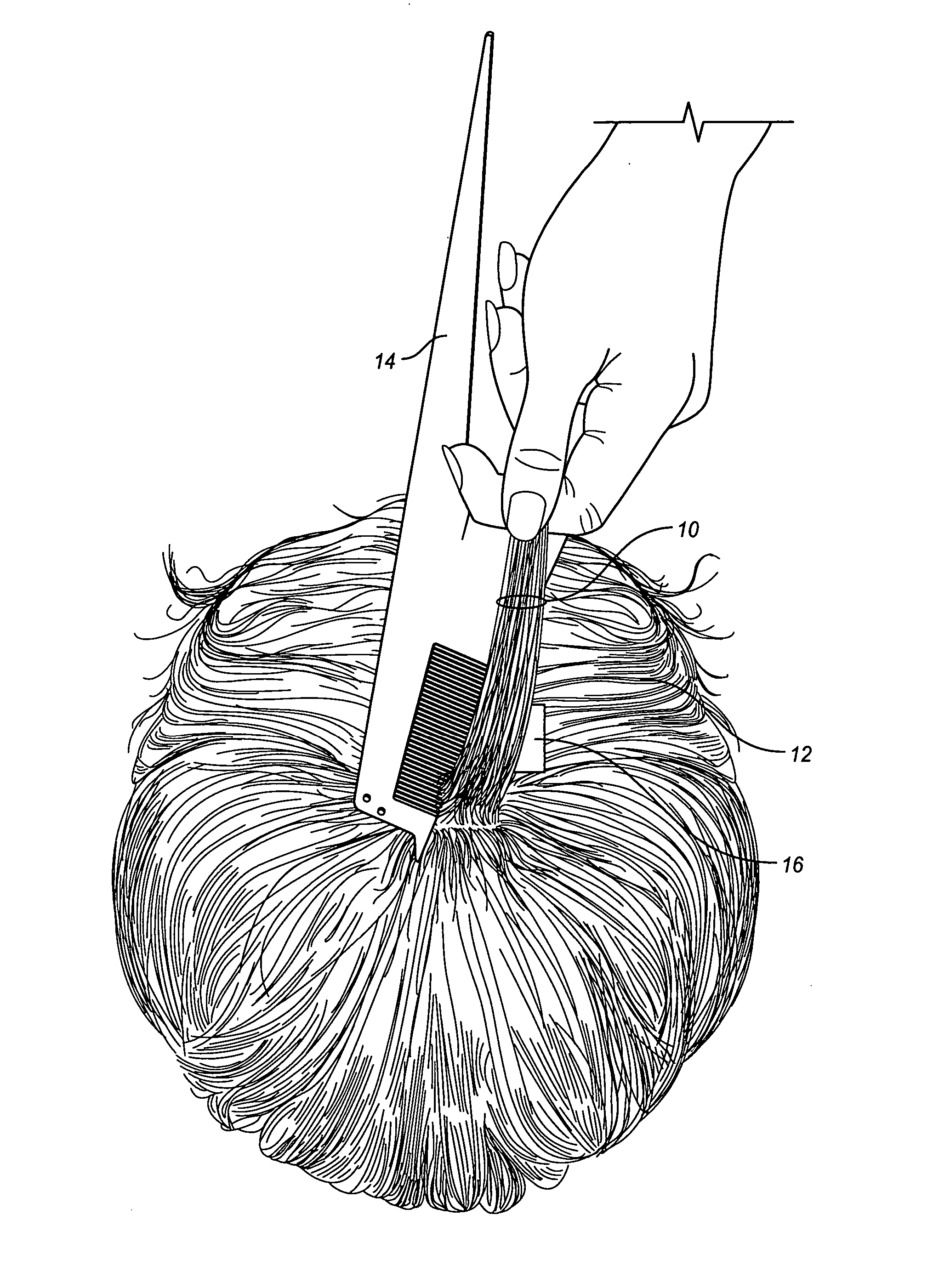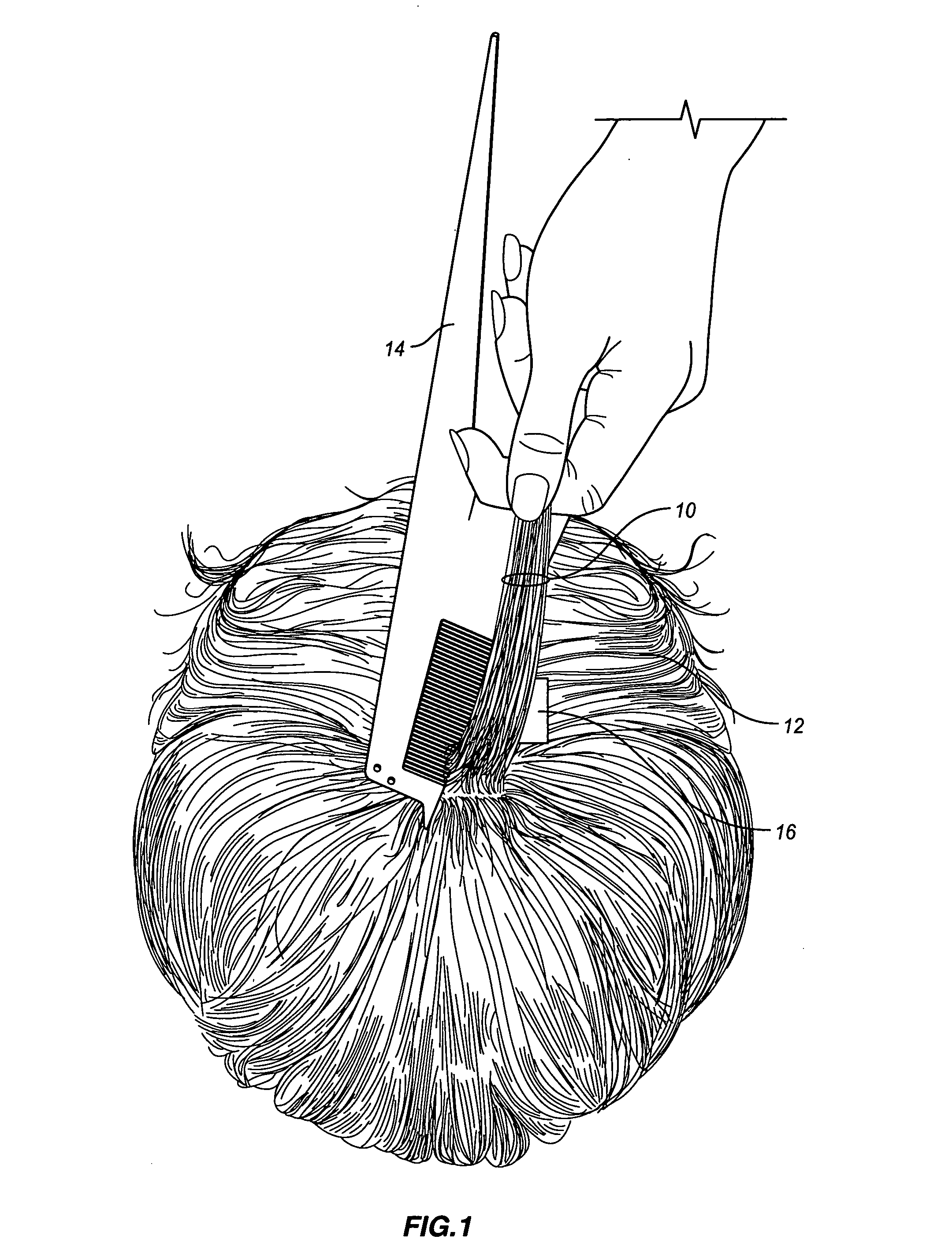Method, device and cartridge for measuring fluctuations in the cross-sectional area of hair in a pre-determined scalp area
a technology of cross-sectional area and scalp area, which is applied in the direction of instruments, applications, person identification, etc., to achieve the effects of reducing hair diameter, easy to perform, and measuring fluctuations in the cross-sectional area of a section of hair
- Summary
- Abstract
- Description
- Claims
- Application Information
AI Technical Summary
Benefits of technology
Problems solved by technology
Method used
Image
Examples
Embodiment Construction
[0048] Referring now to FIG. 1 there is illustrated therein a combed bundle or section of hair 10 from a scalp 12, that has been combed with a comb or combing element 14. The bundle 10 of hair is delineated from a predetermined area of the scalp 12 by a gummed label 16, without cutting the bundle 10 of hair.
[0049] As shown in FIGS. 2-4, sequentially the delineated area of the scalp is fixed by gummed labels 18, 20 and 22. Each gummed label has a centimeter scale printed thereon so that the predetermined area, e.g., 2 square centimeters, can be measured and segregated by the gummed labels 16, 18, 20 and 22 from the rest of the hair on the scalp. The gummed labels 16, 18, 20 and 22 are printed with scale lines at intervals 2 cm apart. The color-coded lines are aligned with the edge of the preceding label and overlapped in a 4 step sequential fashion to create an isolated field of uncut hair that is 2 cm square.
[0050] Preferably, a 2×2 cm of scalp hair is manually isolated by combing...
PUM
 Login to View More
Login to View More Abstract
Description
Claims
Application Information
 Login to View More
Login to View More - R&D
- Intellectual Property
- Life Sciences
- Materials
- Tech Scout
- Unparalleled Data Quality
- Higher Quality Content
- 60% Fewer Hallucinations
Browse by: Latest US Patents, China's latest patents, Technical Efficacy Thesaurus, Application Domain, Technology Topic, Popular Technical Reports.
© 2025 PatSnap. All rights reserved.Legal|Privacy policy|Modern Slavery Act Transparency Statement|Sitemap|About US| Contact US: help@patsnap.com



